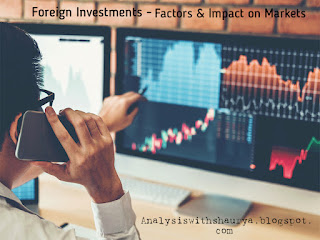In this article, we will see how a verse from Hanuman Chalisa can make us understand, why Turkey is facing a 'cost of living crisis'.
1. The Verse
“Shri guru charan saroja-raj, nija manu mukura sudhaari”
“I clean the mind-mirror with the dust of my guru’s
feet”
This verse of hanuman chalisa depicts, why Turkey
is facing an economic crisis. If I ask, “what
is world” to 100 different people, I will get 100 different answers. The answer
to this question is that, world is nothing, but the image being produce by reflection
in our mirror-mind. Like in real life, if the mirror is dirty we will not get a clear reflection of ourselve in it. Same is the case with our mirror-mind, the
clearer it is, better will be our perception of world”.
If something is not considered by someone as bad, no matter
how much you convince them, they will do that again and again. Because the
reflection in their mind-mirror is blurred, due to dust (negative thoughts,
biased opinions, anger, etc.)
Now, let us see how do this verse shows why Turkey is facing a ‘cost
of living crisis’ (Hyperinflation).
2. Erdogan’s New Economic Policy
Recep Tayyip Erdogan, the president of
Turkey, introduced a new economic policy which was primarily focused on
lowering the interest rates, which will depreciate the Lira (Turkey’s currency) and
hence export will increase and this will boost domestic production, thus
increasing employment.
This is the same matter which a 12th
grade student learn in Macroeconomics, and theoretically it sounds good too. But,
there are certain red flags here. Let us look at different parameters one by one.
Note: Why will Lira depreciate when interest
rate will fall?
Ans. When interest rate (cost of borrowing)
is decreased credit is available at a lower cost. This encourages people to
borrow more and hence increases the money supply of domestic currency. Now
since more of domestic currency is flowing in market, its value decreases
relative to foreign currency.
3 3. After-Effects of New Economic Policy
One part of the story came out to be
true, the interest rate was decreased, Turkish Lira depreciated, and the
exports also increased. The following images show that the interest rates have been reduced drastically since July'22, from 14% to 8%.
.png)
As interest rates were reduced, Lira started falling to new lows. it fell around 58% relative to US Dollar in last 2 years. (refer to the image below).png)
All this was expected and was even the part of new economic policy, this led to increase in exports... but at the same time imports became expensive for domestic consumers. As the Lira depreciated, domestic consumers had to pay more for imported goods (for e.g., what was earlier available at 50 will now be available at 100), this dwarfed the exports and hence led to current account deficits and budget deficit (excess of expenditure over income).
This marks an end to the first part of the story & commencement of the second part.
Current Account Deficit
We can see in the images below, that current account balance fell sharply (implying increasing deficit).
The CAD for January month was around $9.8bn. While the current account deficit for year is around $40bn.
The Current account deficit is a problem for an economy because that deficit has to be financed by borrowing more money, which increases the debt on economy or by using reserves. Well, many countries, icluding India has a negative CAD and many of them are in a healthy state but Turkey is an exception. It is so because of the double-digit hyperinflation in Turkey.
Hyperinflation- Cost of Living Crisis
We can see in the image below that the inflation rate in Turkey has been in double digits. This means that the prices of goods and services, in general, were increasing at around 85% in october 2022 !!!
Even though the rate of inflation has fallen, but it is still quite high, that too in double digits!
Genereally, in case of hyperinflation, people demand frequent incomes, as the prices are increasing rapidly, the money gets spend quickly. And also, the wages need to be increased at a greater rate than inflation. As an emergency measure, the Turkish government has raised the minimum wage by around 55% (minimum wage means the minimum amount of wage that an employer must pay to its employees), doubled the pension amount, asked its employees to opt for VRS.
GDP& Growth
The following image shows the real GDP growth of Turkey. The real GDP growth for FY 2023 has been 2.7%. An economy runs on 4 engines, private consumption expenditure, government expenditure, private investments, and net exports. The main factor behind GDP growth in Turkey was the 'unsustainable consumption expenditure'. It is unsustainable, because as I said that there is hyperinflation prevailing in Turkey, in such a case people do not save too much, as they know that the real value of their money will decrease due to the massive increase in inflation. Therefore, People tend to spend as much as they can in present.
Debt & Forex Reserves
In the above figure, we can see that currency in circulation, in 2021, has become 4x of what it was in 2017, showing the effect of lower interest rates and high inflation. Also, to save Lira from further depleting, Central Bank has been selling forex reserves, which has led to depletion in forex reserves.The debt has become 4x since 2017, but the debt to GDP ratio of Turkey is around 42, which is considered as a very healthy figure. This becomes a very good example, wherein an economy is in crisis not because of debt burden, like Pakistan & Sri Lanka, but due to other factors like inflation, current account deficits, and heavy depreciation in currency.
In the below image, we can see that the unemployment rate has been decreased since 2020, which means that new economic policy has shown positive results on employment figures, though side effects have out weighed this positive effect.
3. Final Words on Turkey's Economic Situation
President Erdogan's idea was to lower interest rates to increase growth, exports, and employment. The growth, as measured by real GDP, is positive but it is too small and isn't acceptable against such a big gamble. The exports rose, but so did the imports, thus widening the current account deficit. The Unemployment rate reduced, but that too is unsustainable. Once the interest rate will increase, we may witness massive layoffs in Turkey, as the borrowing cost will increase, currency will appreciate and exports may go down.
This is a classic case wherein we can learn that it is not necessary that an economic crisis will happen due to huge debt. Here debt to GDP ratio is quite good, but the crisis happened due to hyperinflation. Covid-19 and drought have added fuel to the fire, adding more the 'cost of living crisis' in Turkey.
4. Back to The Verse !!!
The reason I gave reference of a verse from Hanuman Chalisa, its very first line, is to make readers understand, that even if something is wrong, a person may not consider it as wrong because his mind-mirror isn't giving actual reflection. In case of Turkey, the dust on mirror mind is the 'biasness' of the President, i.e. just looking at the positives and not evaluating the eventuallities.
In the same way, there can be many things which we also consider to be good, but they mayn't be. All we have to do is, to try our best to keep our mind-mirror dust free... being unbiased, calm, and optimistic.
The ancient texts can solve many problems of contemporary world, be it economic or political. We just have to use it and look at it from a different angle.
Shaurya Gupta
Bcom Hons, University of Delhi
Financial Markets Hons, Yale University
Text is subjected to copyright. You can use the text but kindly do not publish this content.

.png)
.png)
.png)
.png)
.png)

.png)
.png)
.png)



Comments
Post a Comment
Text is subjected to copyright. You can use the text but kindly do not publish this content.